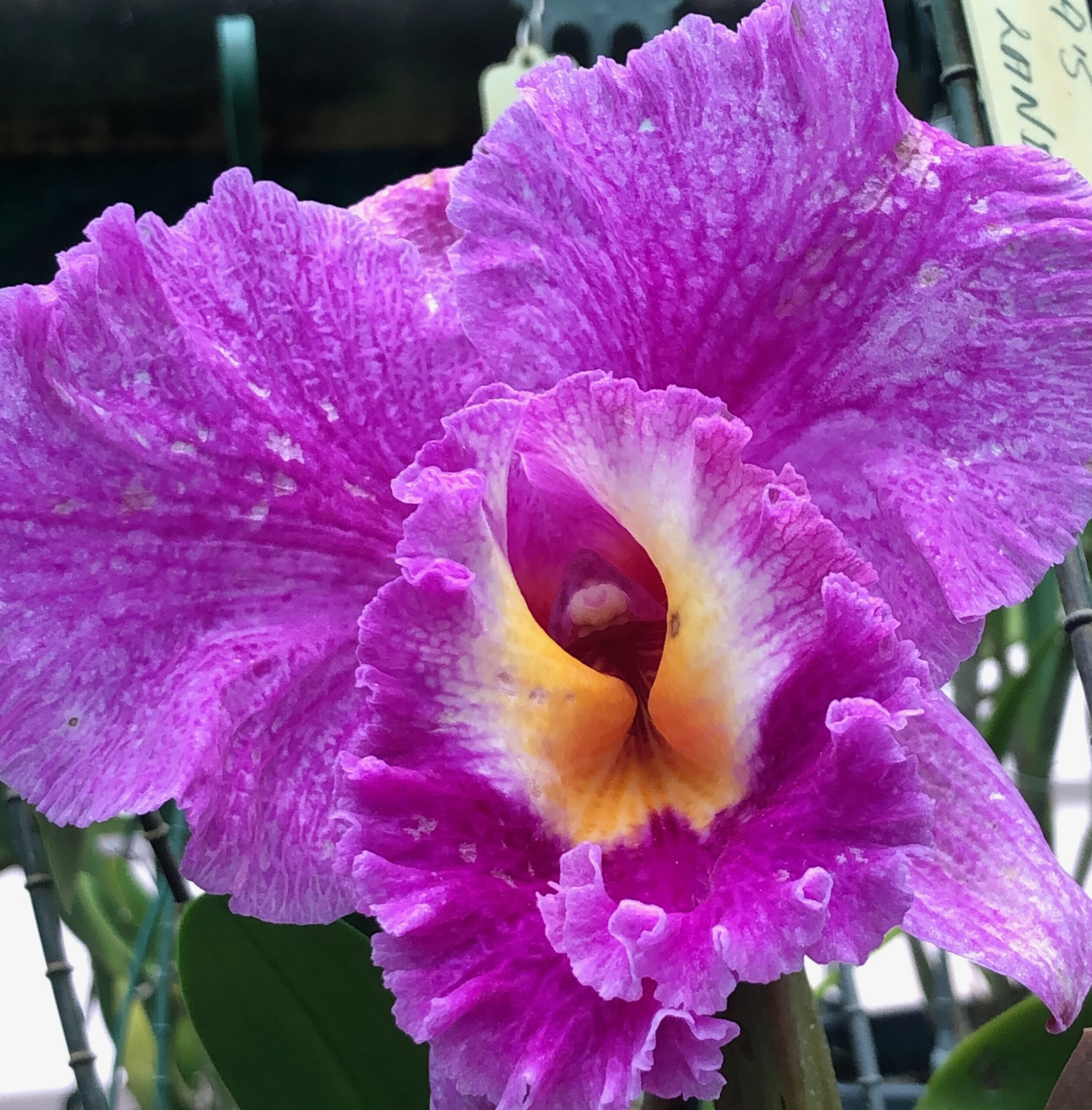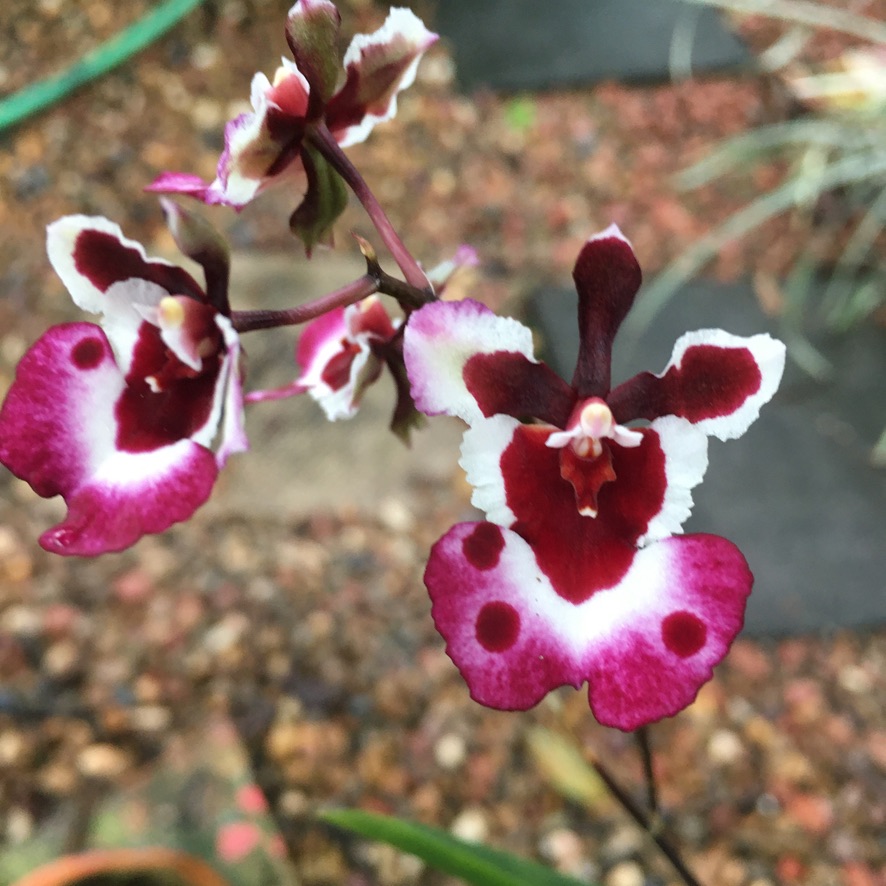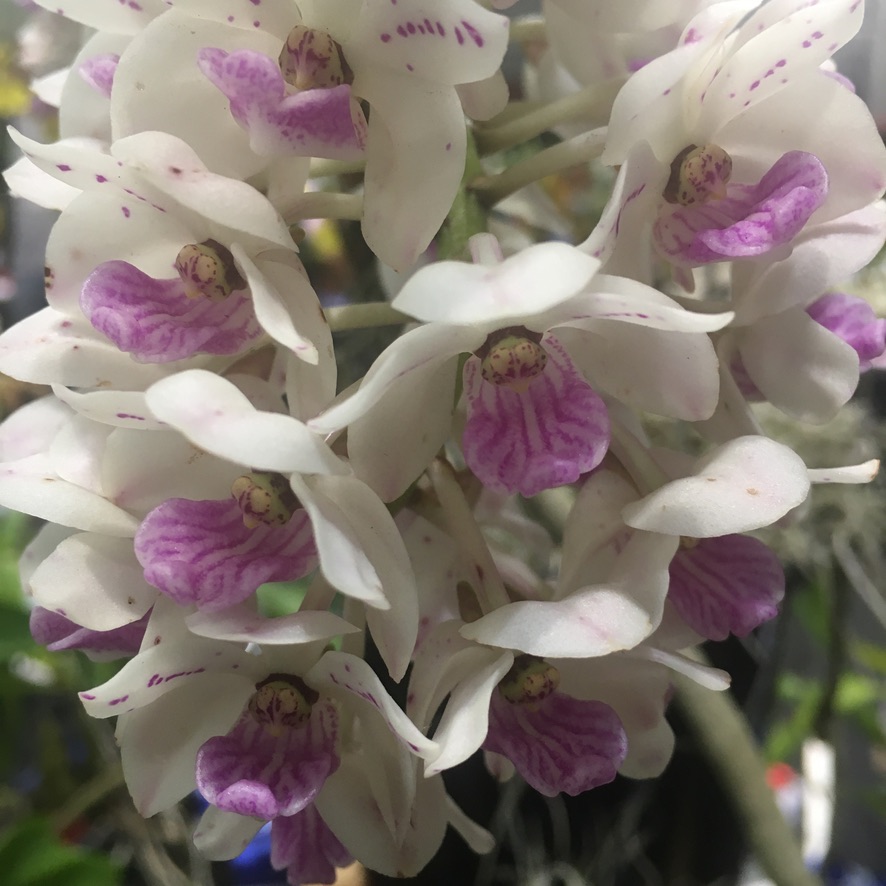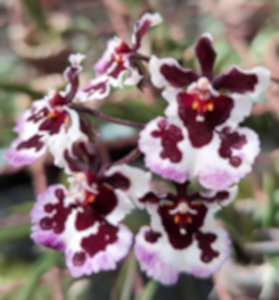Watering orchids is a common how to question. A combination of thick cell walls, succulent leaves; a mechanism called CAM, sunken stomata, pseudobulbs and thick fleshy roots, helps with an orchids’ drought tolerance.
I will try and explain this idea of drought tolerance a bit better because it’s a tad confusing and adds to the dilemma that novice growers have about how much to water.
Tropical epiphyte orchids in the wild will never get overwatered because they live on tree bark (or sometimes rocks) which dry quickly. This is why the preferred medium for growing these orchids is bark or wood mounts.
An orchids roots (velamen radium) have been shown in studies to have a fast water and nutrient uptake making the most of the sudden torrential downpours occurring in the wild. The roots stay hydrated for several hours. You can watch this when you’re watering your plants. The water droplets seem to stick to the roots rather than run off.
Can you overwater your orchids? Yes, but it’s a little harder if you grow them in fast draining media, or they are mounted. But be aware, media such as bark eventually breaks down and then can stay wet. It’s a fine line between under and overwatering.
Again study the environment where the orchid originates to understand its needs. If this is a tropical orchid then expect that there will be a dry season (winter in Australia) and plenty of rain, humidity and heat in the monsoon season, so plenty of water in summer.
However, we learn how to provide that extra TLC to our orchid plants to get the best from them and that can and should include a little extra watering and regular fertilising when required, which is the tricky part.
Next article we will discuss fertilising…..
Lots of information here too Australian Orchid Council





One thought on “Part 3 Growing orchids and their watering”